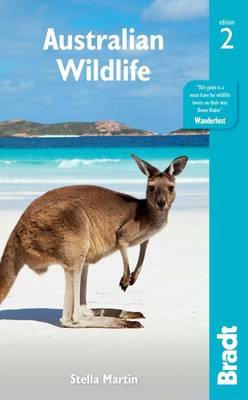
- Afhalen na 1 uur in een winkel met voorraad
- Gratis thuislevering in België vanaf € 30
- Ruim aanbod met 7 miljoen producten
- Afhalen na 1 uur in een winkel met voorraad
- Gratis thuislevering in België vanaf € 30
- Ruim aanbod met 7 miljoen producten
Zoeken
Omschrijving
A new, thoroughly updated second edition of Bradt's Australian Wildlife, covering habitats, mammals, birds, reptiles, amphibians, invertebrates, the marine environment and where to go. Wildlife writer Stella Martin combines the encyclopaedic knowledge of David Attenborough with the enthusiasm of the late Steve Irwin to offer a unique guide which, compared to others, is variously more portable and more detailed, has a broader scope, goes beyond identification notes and includes an in-depth guide to ecosystems. It also covers all regions of Australia. Background chapters explain how Australia's wildlife evolved in isolation and how the geology, soil and climate affect its natural history. There is also a close look at Australia's infamously dangerous creatures, avoiding the clichés and putting their threat into perspective: although most of the world's most venomous snakes are found in Australia, they are by no means the deadliest. Essential advice is offered for avoiding hazardous wildlife and there are also useful first aid tips. Up-to-date information on conservation is included, including fire and its role in the Australian ecology and the effect of exotic feral animals and weeds. And there are tips on how to find, enjoy and identify wildlife with a 'where to go' section featuring a state-by-state overview of key wildlife sites, with maps. With a focus on interesting information about the general biology and behaviour of the animals - with some detail about the most commonly seen species - and explaining how the different ecosystems 'work', this guide is for visitors who want to know more about what they see but don't have room for an entire library of reference books. It is a book to read in bed - and encourage you to be up at dawn.
Specificaties
Betrokkenen
- Auteur(s):
- Uitgeverij:
Inhoud
- Aantal bladzijden:
- 200
- Taal:
- Engels
Eigenschappen
- Productcode (EAN):
- 9781784773458
- Verschijningsdatum:
- 7/05/2020
- Uitvoering:
- Paperback
- Formaat:
- Trade paperback (VS)
- Afmetingen:
- 135 mm x 211 mm
- Gewicht:
- 362 g

Alleen bij Standaard Boekhandel
+ 47 punten op je klantenkaart van Standaard Boekhandel
Beoordelingen
We publiceren alleen reviews die voldoen aan de voorwaarden voor reviews. Bekijk onze voorwaarden voor reviews.








